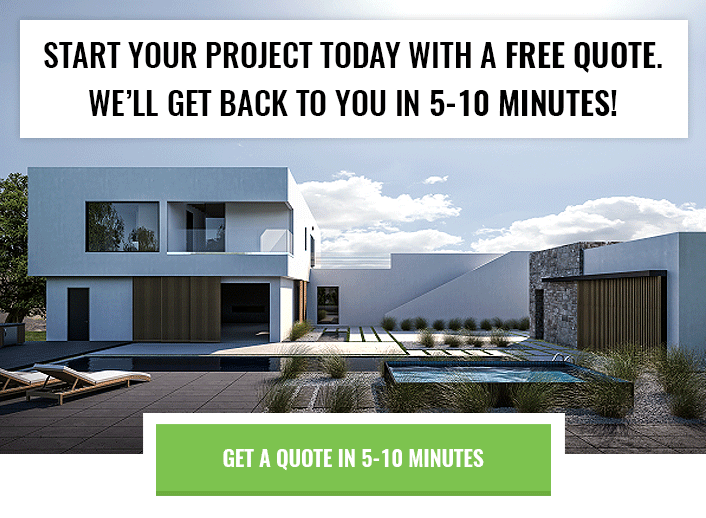A beautiful garden in a small space
After decades of young families fleeing urban centers for the suburbs, the trend is reversing. This has led to a mass reintroduction of young people into urban areas and a sudden necessity for creative thinking about small spaces.
Like the dwellings themselves, urban outdoor areas are frequently small, and require an eye for design and problem-solving skills when it comes to adding engaging garden settings. It is no surprise that urban landscapes feature more bricks than begonias!
Landscape architecture can be used to create stunning, easily maintained green space that is enjoyable, durable, and environmentally considerate. A dream garden in a small space can be challenging but the rewards far outweigh the initial challenges.
Analyze the Site
There are six key factors to note when analyzing the site you intend to transform with landscape architecture. The site analysis will lead you to conclusions that simplify creating an appropriate landscape design.
Light Volume
Heat Sources
Water Flow
Soil Quality
Air Flow
Site-specific Requirements
Light Volume
Each plant has its own light requirements. Some prefer bright sun for six or more hours a day while others enjoy dappled light with shade most of the time. Spend a day evaluating how the sun’s light moves over the space. Take note of when it is brightest and where. Also, consider changes to this pattern. Eg. Is there a tall building, fence, or tree line being put up nearby in the near future?
Pro Tip: Light reflecting off of glass windows or other surfaces is very hot and can quickly burn plants susceptible to heat.
Heat Sources
The sun is not the only entity that produces heat for vegetation. Cities are frequently several degrees (or more) warmer than the suburbs surrounding them. This phenomenon makes cities a “heat island.” Reflected light, warm asphalt, and mechanical exhaust are all sources of heat.
Pro Tip: Use ground cover to keep the soil temperature cooler in areas where heat sources are prevalent.
Water Flow
Water can create significant challenges for an urban landscaping project. While most plants need water to survive, fast-moving or high volume water can be detrimental. Research the prevalence of rain in your area to determine what type of vegetation is best. On a rainy day, take note of how water flows through your space. Once you have an idea of where the water comes from and where it goes, you can develop a plan for management, or add appropriate water sources if there are none.
Pro Tip: Water management plans do not always require a backhoe! Stones can displace water and lessen the impacts of its flow. Use them creatively to reduce the speed and volume of water running through your urban landscape.
Soil Quality
An engaging layout for a glasshouse in the city
Large tracts of soil are rare in urban settings. The soil that does exist often suffers several maladies unique to the city. Compaction, runoff, high salt levels, and pH imbalances are consistently present. The soil must be tested before the installation of any living landscape elements. The results will lead you toward the appropriate soil amendments and plants that prefer the soil quality of your space.
Pro Tip: To quickly find vegetation that grows in poor, compacted soil, think of the wetlands. Most plants, shrubs, and trees found in wetland areas are amenable to less than ideal soil conditions.
Air Flow
Urban airflow conditions are varied. Buildings and other structures create tunnels that can increase the speed of wind significantly in a small space. While plants are strengthened by mild air movement, even moderate wind can quickly damage vegetation.
Pro Tip: Leaf or limb loss is not the only threat from the wind. Higher wind speeds can quickly dry soil and expedite the transpiration process, leaving plants in need of frequent watering.
Site-specific Requirements
Urban small-space landscapes are as diverse as the people living in the city. One building could have a communal garden area, while another turns into a snow removal collection site in the winter. These types of unique scenarios should impact your landscape design decisions. Keep local regulations (plant height, setback distances, and sight-line restrictions) in mind as you plan.
Pro Tip: For those dealing with snow in the winter, plant perennials that die back in the fall. Cutting them down before winter storms start will prevent damage.
3D renderings of landscaped areas - how you can ensure your project works
Creativity unlimited by the size of the space the architect or landscape designer is working with
Because of the challenges involved with planning small internal landscaped spaces, you can save both time and money by commissioning a 3D outdoor design visualization of your planned space prior to breaking ground.
Many people think that 3D renderings are just for buildings, but we have worked on many projects that focus on landscaped space rather than the built environment itself. 3D visualizations of landscapes can be incredibly realistic, and can help you avoid expensive mistakes by seeing whether your planned design will actually work in the space, or whether it will be too constricting.
We can even design the space as a virtual reality file for you, so you can put yourself right into what your space will look like in real life, from the comfort of your living room!
landscape design in small spaces - Healing Transformation
Transforming your small urban outdoor space is healing for you and the site itself. Cities are overrun with pollution and hardscapes that promote poor water management. Landscape architecture is vital to the improvement of urban outdoor settings.
Many escape the city on weekends or holidays in pursuit of the “great outdoors.” The reasons given for this compulsion are often fresh air, scenery, and quiet. Use landscape architecture in your small space to create an area that provides those qualities without leaving the confines of the city. Organic beauty is known to reduce stress and improve mental health.
After analyzing your site, choose plant life that makes sense for the needs of your space. Plants grow virtually everywhere on the planet. While your urban small space might feel like a wasteland, it is possible to find something will change its look and feel entirely!
If you feel like architectural rendering services would help you plan your small space, get in touch with us today!

Alex Smith
Manager & Co-Owner Render 3D Quick
Alex Smith is a manager and co-owner at Render3DQuick, with over 6 years’ experience project managing their large team of 3D rendering professionals. Alex is obsessed with architecture and is a CAD design specialist in his own right and an expert in the field of architectural visualization, 3D rendering, and virtual reality tours.
As the first point of contact when you get in touch with Render3DQuick, Alex loves sharing his knowledge and answering any questions you may have about architectural visualization or the latest technologies and techniques they utilize.
Connect with Alex on LinkedIn here.




